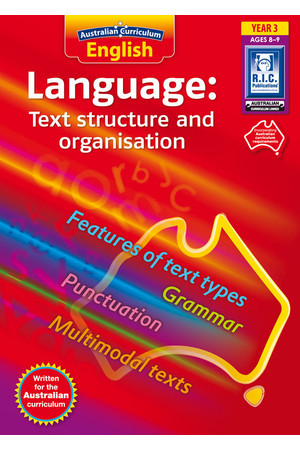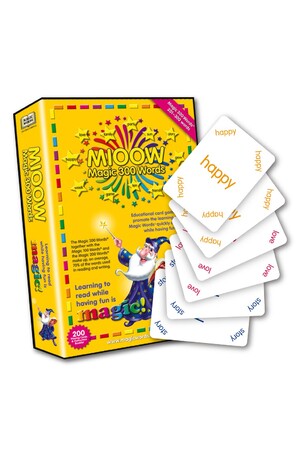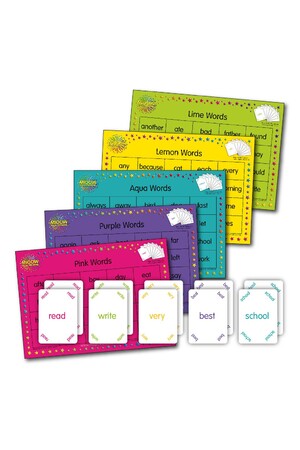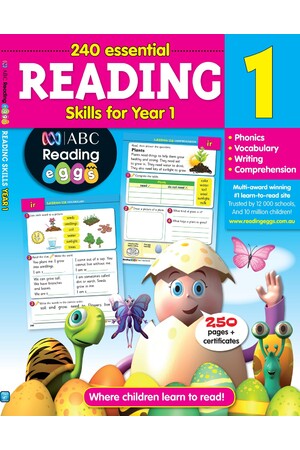Part of the series English Is... English for the Australian Curriculum Year 10.
View all products in this series

English Is ... English for the Australian Curriculum Year 10 & eBookPLUS
KEY FEATURES- Full coverage of the Australian Curriculum: English content descriptions allows students to achieve year level standards
- The text is always at the centre of the learning
- Differentiated activities provide all students with an entry point to the texts through a Getting started, Working through and Going further grading
- Sub-unit structure allows for a dip-in, dip-out approach
- Wordsmiths or mini-workshops drill down to teach key skills in a Tell me, Show me, Let me do it process
- Ready to Read prepares less able readers to engage with the texts
- Asian and Indigenous texts are featured along with classic, world, Australian and contemporary texts
- 'Need to know' explains key terms at point of need so that students learn English's metalanguage
- Language, Literature and Literacy links connect to the Australian Curriculum content descriptions
- Wide variety of assessment options at the end of every unit with rubrics to guide students
- Access from any digital device: PC/MAC/iPad/Android Tablet.
- Worksheets - Word documents designed for easy customisation and editing.
- Interactivities and games to reinforce and enhance student learning.
- eLessons - engaging video clips and supporting material.
- Weblinks to relevant support material on the internet.
- ProjectsPLUS - unique ICT-based projects that provide opportunities for students to demonstrate creativity, thinking skills and teamwork.
Contents
- About eBookPLUS ix
- How to use this book x
- Acknowledgements xii
- UNIT 1 English — Change and Continuity 1
- How does the English language and its history reveal who we are and what we value? 1
- Tuning in 2
- 1.1 The history of English 3
- What’s so special about English? 3
- Old English: The Seafarer 3
- Old English: Beowulf 7
- Beowulf on the big screen 10
- Writing that packs a punch 11
- French influences on English language 13
- Middle English emerges 14
- The Pardoner’s Tale 14
- Wordsmith . . . Greek and Latin roots 17
- 1.2 Technology and language change 19
- How do new technologies alter language? 19
- Weird words 20
- Wordsmith . . . The future of the English language 23
- 1.3 Language and identity 24
- How does our language express our sense of identity? 24
- Talkin’ Ostrayan 24
- A distinctive Australian voice 24
- English and Indigenous Australia 26
- What’s in a name? 28
- Teen-speak 29
- Really cool 31
- Wordsmith . . . Denotation, connotation and euphemism 32
- Compose and create 33
- UNIT 2 Adaptations and transformations 35
- How are valued texts adapted or transformed for new contexts? 35
- Tuning in 36
- 2.1 Drawing on Shakespeare 37
- Why are there so many adaptations of Shakespeare’s plays? 37
- Shakespeare goes intertextual 39
- A poetic adaptation of Romeo and Juliet 42
- Wordsmith . . . Counting the beat 44
- 2.2 Creating a classic ‘brand’ 46
- What gives classic texts their enduring value? 46
- The original book 46
- Pride, prejudice and popcorn 51
- Wordsmith . . . Active and passive voice 53
- 2.3 Creating alternative meanings 54
- How can texts be altered to reflect new values and beliefs? 54
- Classic picture books 57
- Turning to the big screen 59
- Wordsmith . . . Americanising English 61
- Compose and create 62
- UNIT 3 Text in Context 63
- Why is context central to the production and reception of a text? 63
- Tuning in 64
- 3.1 What is context? 65
- How does context influence both the creator of the text and the audience? 65
- Positioning 66
- Cultural context: time/era 68
- Context of situation: theme in a novel 68
- Avatar — theme in a film 73
- Wordsmith . . . The skill of debating 74
- 3.2 The context of place 76
- How is context conveyed through setting? 76
- Of Mice and Men 76
- Avatar — setting in a film 80
- Wordsmith . . . Impressionistic description 82
- 3.3 The context of social circumstances 83
- How do a society’s prevailing beliefs and values relate to context? 83
- Social circumstances 83
- The person telling the story 83
- Creating the context for a great story 89
- Wordsmith . . . Writing an analytical response 94
- Compose and create 96
- UNIT 4 Artistry 97
- How do writers capture powerful moments that move us? 97
- Tuning in 98
- 4.1 Creating a narrative persona 99
- How do writers craft a persona and voice to engage their audience? 99
- Wordsmith . . . Establishing a persona 104
- 4.2 Structure: orientation, conflict and climax 107
- How do great writers experiment with structure? 107
- Orientation 107
- Conflict 109
- Climax 112
- Wordsmith . . . The narrative arc 115
- 4.3 Developing style 118
- How does a writer create a distinctive style? 118
- Style in a prose novel 118
- Style in a verse novel 121
- Wordsmith . . . Imagery, symbols and motifs 124
- Compose and create 126
- UNIT 5 Manipulation 127
- How do writers and composers manipulate us through texts? 127
- Tuning in 128
- 5.1 The fiction writer as manipulator 129
- How do fiction writers influence our responses to their narrative? 129
- Manipulating through dialogue 133
- Wordsmith . . . Using dialogue to maintain reader interest 139
- 5.2 The non-fiction writer as manipulator 141
- How do non-fiction writers influence our perceptions? 141
- Similar views; different tones 144
- Wordsmith . . . Perfecting the witty one-liner 147
- 5.3 The visual artist as manipulator 148
- How can visual images and plays upon words manipulate us? 148
- Wordsmith . . . How punctuation makes meaning 152
- Compose and create 153
- UNIT 6 Curtain up! 155
- How do performers interpret, craft and engage? 155
- Tuning in 156
- 6.1 Understanding performance 157
- How do characters create performance? 157
- Mapping a character 157
- Objectives in action 158
- How do performers reveal their characters? 160
- What can words tell us? 163
- A new character 164
- Wordsmith . . . Understanding conflict 165
- 6.2 Analysing performance 167
- How can we analyse a specific play? 167
- The tragedy of Macbeth 167
- Tragedy in text 168
- The structure of tragedy 170
- Characters in Macbeth 172
- Character in focus: Lady Macbeth 173
- Three witches 175
- Wordsmith . . . Textual interventions 177
- 6.3 Creating performance 179
- How can we use text to create performance? 179
- Act III, Scene ii 180
- Guilty or not? Creating a new text for performance 182
- Law and order 184
- Wordsmith . . . Blocking and emotional interpretation 186
- Compose and create 189
- UNIT 7 People and Places 191
- How are people and places represented through language and images? 191
- Tuning in 192
- 7.1 Representing places 193
- How are representations constructed? 193
- Travel tales online 196
- Feature articles on travel 198
- Wordsmith . . . Choosing language to craft the imagery of place 201
- 7.2 Representing ethics 203
- How do representations shape reader responses to ethical issues? 203
- Representing the ethics of voluntourism 206
- Wordsmith . . . Citing the work of others in your writing 210
- 7.3 Representing people 212
- How do documentary film-makers represent people? 212
- Constructing an image 217
- Constructing representations through dialogue 219
- Wordsmith . . . Analysing representations in documentary 222
- Compose and create 223
- Projects Plus 225
- Literary appreciation 226
- Wish you were here 228
- Glossary 230
- Subject index 233
- Author/Title index 236
View Other Year Levels in the 'English Is ... English for the Australian Curriculum' Series
| ISBN | 9781742467856 |
| Publisher | Jacaranda |
| Product Type | Student Books, |
| Year Level | Year 10, |
Be The First To Review This Product!
Help other Teacher Superstore users shop smarter by writing reviews for products you have purchased.

















